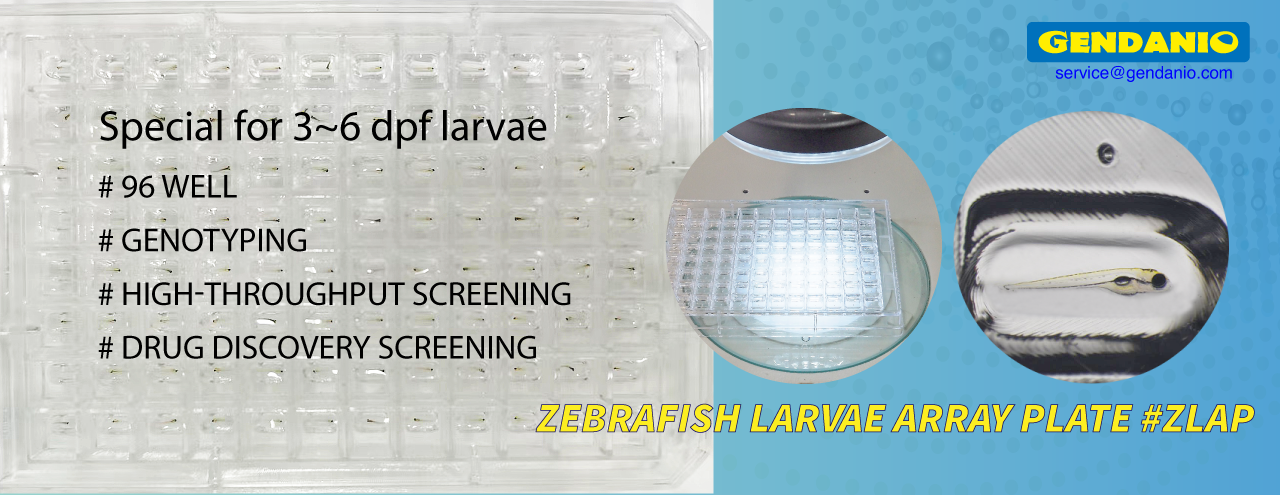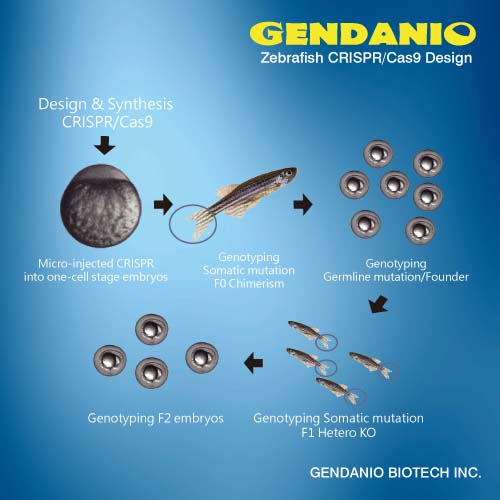Zebrafish
 The zebrafish (Danio rerio), widely utilized as an model organism for the study of development, has emerged as an attractive vertebrate model for human diseases including Parkinson’s Disease (PD). Characteristics of zebrafish, which include their relatively small size (3-4 cm adult size), short generation time (3 months), external development, transparent appearance until early adulthood and both genetic and anatomical correlations with the human central nervous system (CNS), facilitates the amenability of this animal model to the study of human CNS diseases through the rapid in vivo screening of neuroprotective compounds.
The zebrafish (Danio rerio), widely utilized as an model organism for the study of development, has emerged as an attractive vertebrate model for human diseases including Parkinson’s Disease (PD). Characteristics of zebrafish, which include their relatively small size (3-4 cm adult size), short generation time (3 months), external development, transparent appearance until early adulthood and both genetic and anatomical correlations with the human central nervous system (CNS), facilitates the amenability of this animal model to the study of human CNS diseases through the rapid in vivo screening of neuroprotective compounds.
Dopaminergic (DA) neurons, whose specific loss in the substantia nigra underlies the neuropathology in PD, has been well characterized in the zebrafish1,2. Administration of toxins, including 6-hydroxydopamine (6-OHDA) and 1-methyl-4-phenyl-1,2,3,6-tetrahydropyridine (MPTP), have been shown to induce DA neuron cell loss in several animal models including the zebrafish. These studies indicate that the zebrafish can be utilized as an effective animal model to elucidate the genetic pathways that underlie PD, determine the downstream effects of environmental toxins and identify new pharmacological strategies that may mitigate PD-associated neurodegeneration.
Research Highlights:
- Systemic injection of MPTP or 6-OHDA reduced dopamine and noradrenaline levels & reduced locomotor behavior, but did not alter tyrosine hydroxylase or caspase 3 protein levels3,4
- MPTP-induced neurodegeneration is prevented by incubation with the monoamine oxidase-B inhibitor l-deprenyl, incubation with the dopamine transporter inhibitor nomifensine or targeted inactivation of the dopamine transporter gene4,5
- Highly conserved homologues of human genes implicated in PD have been identified including ubiquitin C-terminal hydrolase L16, the chaperone/protease DJ-17 and alpha-synuclein8
- Inactivation of DJ-1 expression, through a morpholino oligonucleotide knockdown strategy, resulted in the loss of DA neurons after exposure to hydrogen peroxide and the proteasome inhibitor MG132, and lead to the activation of cell death pathways through the increased expression of p53 and Bax9
- Reduced levels of PINK1, a PTEN (phosphatase/tensin homolog on chromosome 10)-induced putative kinase 1 that is mutated in several autosomal recessive forms of PD and sporadic PD cases, resulted in a 30% decrease in the number of central DA neurons, altered mitochondrial function and increased caspase-3 activity, GSK3-beta activity and reactive oxygen species levels10
References:
1 Flinn L, Bretaud S, Lo C, Ingham PW, Bandmann O. Zebrafish as a new animal model for movement disorders. J Neurochem. 2008 Sep;106(5):1991-7. {Abstract}
2 Panula P, Sallinen V, Sundvik M, Kolehmainen J, Torkko V, Tiittula A, Moshnyakov M, Podlasz P. Modulatory neurotransmitter systems and behavior: towards zebrafish models of neurodegenerative diseases. Zebrafish. 2006;3(2):235-47. {Abstract}
3 Anichtchik OV, Kaslin J, Peitsaro N, Scheinin M, Panula P. Neurochemical and behavioural changes in zebrafish Danio rerio after systemic administration of 6-hydroxydopamine and 1-methyl-4-phenyl-1,2,3,6-tetrahydropyridine. J Neurochem. 2004 Jan;88(2):443-53. {Abstract}
4 Lam CS, Korzh V, Strahle U. Zebrafish embryos are susceptible to the dopaminergic neurotoxin MPTP. Eur J Neurosci. 2005 Mar;21(6):1758-62. {Abstract}
5 McKinley ET, Baranowski TC, Blavo DO, Cato C, Doan TN, Rubinstein AL. Neuroprotection of MPTP-induced toxicity in zebrafish dopaminergic neurons. Brain Res Mol Brain Res. 2005 Nov 30;141(2):128-37. {Abstract}
6 Son OL, Kim HT, Ji MH, Yoo KW, Rhee M, Kim CH. Cloning and expression analysis of a Parkinson's disease gene, uch-L1, and its promoter in zebrafish. Biochem Biophys Res Commun. 2003 Dec 19;312(3):601-7. {Abstract}
7 Bai Q, Mullett SJ, Garver JA, Hinkle DA, Burton EA. Zebrafish DJ-1 is evolutionarily conserved and expressed in dopaminergic neurons. Brain Res. 2006 Oct 3;1113(1):33-44. {Abstract}
8 Sun Z, Gitler AD. Discovery and characterization of three novel synuclein genes in zebrafish. Dev Dyn. 2008 Sep;237(9):2490-5. {Abstract}
9 Bretaud S, Allen C, Ingham PW, Bandmann O. p53-dependent neuronal cell death in a DJ-1-deficient zebrafish model of Parkinson's disease. J Neurochem. 2007 Mar;100(6):1626-35. {Abstract}
10 Anichtchik O, Diekmann H, Fleming A, Roach A, Goldsmith P, Rubinsztein DC. Loss of PINK1 function affects development and results in neurodegeneration in zebrafish. J Neurosci. 2008 Aug 13;28(33):8199-207. {Abstract}
























